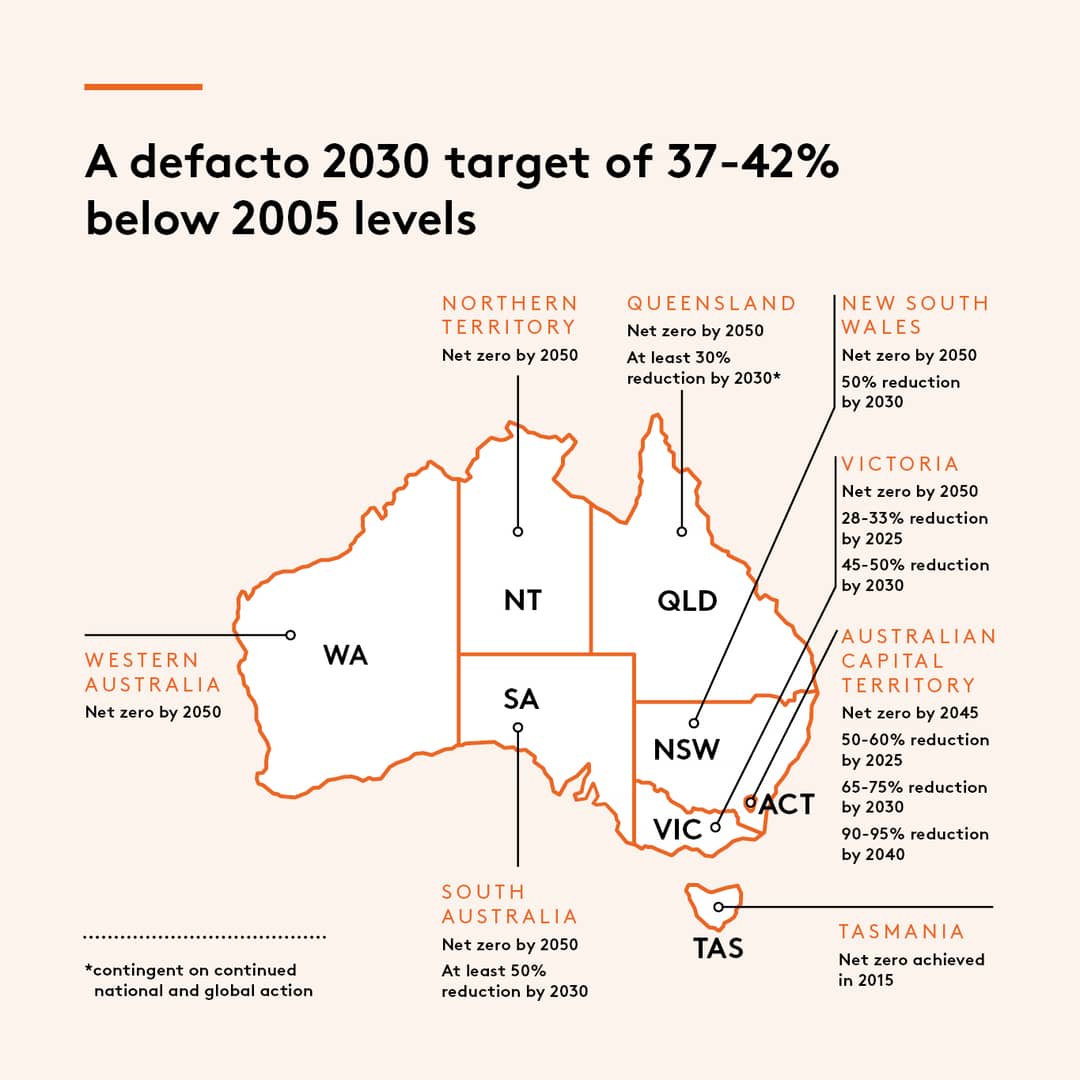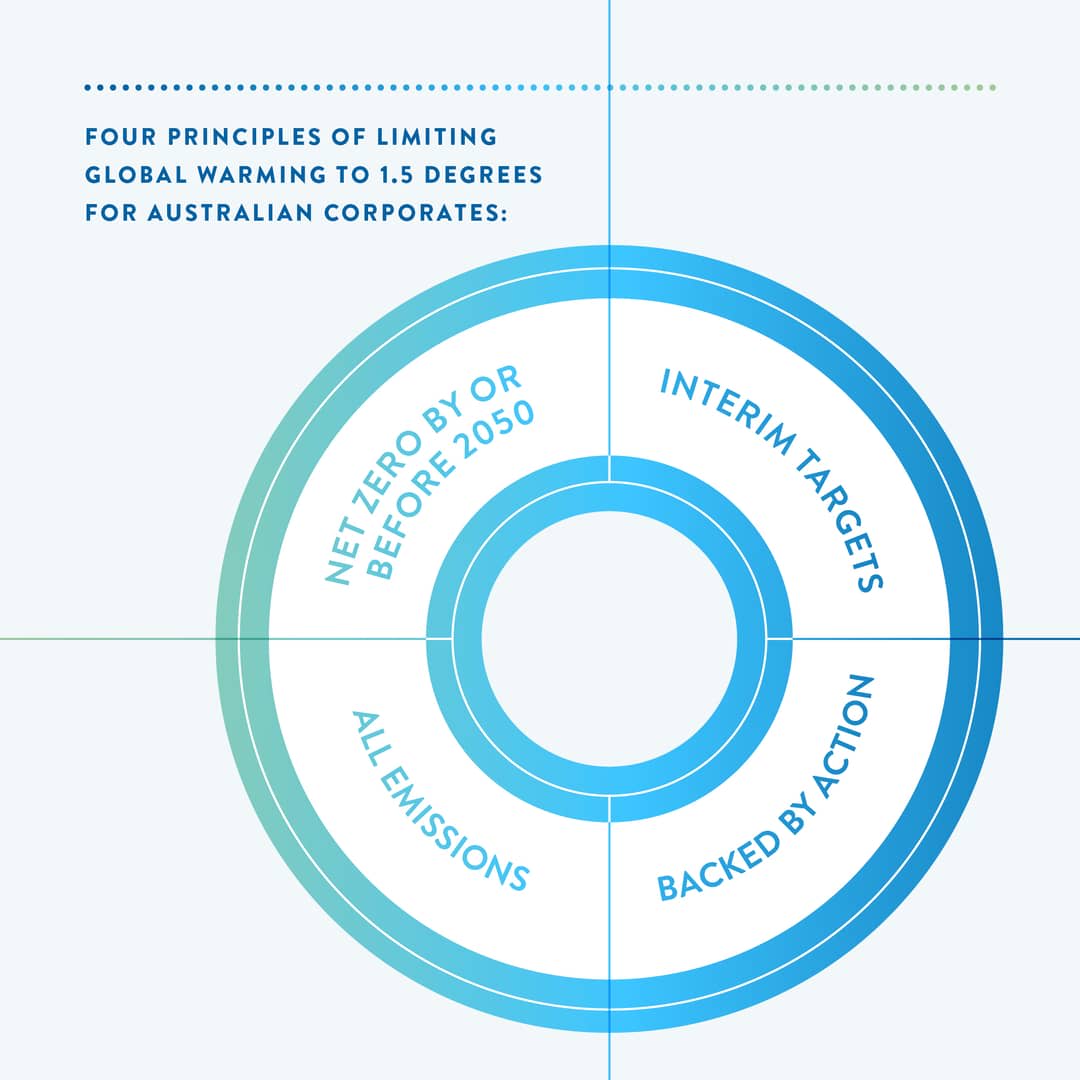Setting net zero targets is just part of the equation for a 1.5°C future. Two new reports out of ClimateWorks Australia highlight some of the key actions Australia’s state and territory governments, and the corporate sector, have taken, but warns much more needs to be done to achieve it.
Jodi Rockman
Engagement Coordinator, Sustainable Corporates Team, ClimateWorks
Simon Graham
Senior Analyst, ClimateWorks Australia, Monash University
The reports, “” and ““, outline the urgent need for companies and governments to bring forward their net zero targets and 1.5°-aligned actions, as well as setting ambitious interim goals during what has been described as a “transformational decade”.
Limiting global warming to 1.5°C
In 2015, nations agreed in Paris to limit global temperature rise to well below 2°C, preferably to 1.5°. Each increment of warming avoided will make a significant difference to the frequency of extreme weather events, the level of global sea rise, and the melting of Arctic ice.
Keeping temperature rise to 1.5° means we can achieve net zero emissions worldwide by 2050. For developed nations such as Australia, however, net zero needs to be met as early as the mid-2030s. This is because emissions will take longer to peak in developing countries due to sustainable development and efforts to eradicate poverty.
Some Australian state and territory governments and corporations are rising to the 1.5° challenge – but there’s still much more urgent work that needs to be done by many more.
More coordinated climate action needed
As of July 2020, Australia’s state and territory governments have set a target of net zero emissions. For most, this is by 2050, and these commitments cover all emissions produced in Australia. In doing so, they represent an important step towards serious coordinated action on climate in Australia.
But aligning action to 1.5°C would see net zero achieved much earlier.
The Paris goals also require significant changes to occur this decade. In ClimateWorks’ scenario aligned to 1.5°C, by 2030 Australia’s overall emissions would need to decrease by 74% from 2005 levels.
shows that current interim targets equate to an approximate 37-42% reduction on 2005 levels by 2030. This is short of what’s needed, but is still higher than the current 26-28% target at the federal level.

that, since the start of this decade, state and territory governments have made significant regulatory and legislative changes, and have allocated billions of dollars of funding to emissions reduction measures.
New South Wales and Victoria, for example, have released electric vehicle strategies that are aimed at having these vehicles account for 50% of new car sales by 2030, and current state and territory government renewable energy commitments will see approximately 55% of Australia’s electricity being renewables-generated by the end of the decade.
Companies underestimate the changes needed
Over the past two years, ClimateWorks’ assessed and tracked 158 corporate climate commitments. It found there’s huge momentum in companies adopting climate commitments, including net zero targets in Australia, but to be aligned with limiting warming to 1.5°C, corporate climate action needs to be bigger and bolder.
Commitments made by companies, in particular interim or medium-term commitments, tend to underestimate the steep trajectory and significant change required from 2025 onwards. Most commitments focus heavily on reducing operational emissions, but don’t address emissions occurring along the value chain, or customer or financed emissions – which are often the most significant source of emissions.
In addition, many commitments aren’t clearly articulated nor measurable. Notably, there’s also a lack of demonstrable and tangible actions being reported to back commitments that companies have made.
Commitments often use carbon neutrality and net zero interchangeably, but they’re not the same. Commitments to carbon neutrality usually rely on offsets. This approach doesn’t sustain net zero in the long term. Offsets should only be used as a last resort, when other reduction options aren’t available.
The report establishes best-practice principles for net zero targets based on climate science, which reflect growing global expectations.
What does it take to limit warming to 1.5°C?
To limit warming to 1.5°C, a company’s net zero commitment must cover these four principles:
- A commitment to net zero emissions by or before 2050
- Medium-term targets that are appropriate and ambitious
- Tangible actions to support achieving these
- Commitments that cover all emissions, such as value chain, customer and financed emissions – not just operational.
The report includes examples of where companies are able to demonstrate one or some of these principles. But to be aligned with limiting global warming to 1.5°C, a company must satisfy all four of these principles. Only two companies, Dexus and Fortescue, have done this.

Governments and companies worldwide are increasing their climate ambitions in the lead-up to COP26, where parties will discuss the actions needed to keep global temperature rise to below 1.5°C.
The window to do this is narrowing. Australia can do its part, but only if all levels of government, businesses and individuals go “all in” on climate action this decade.







